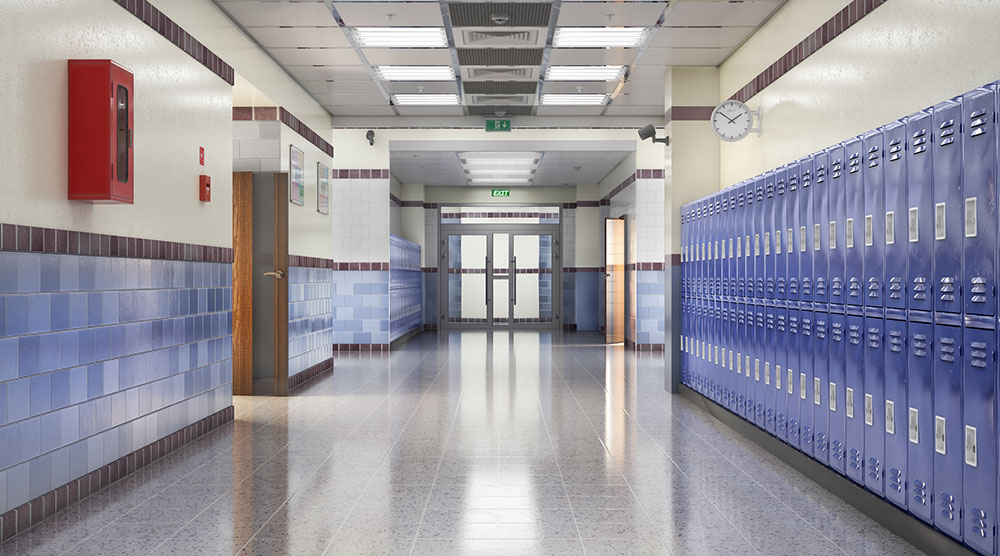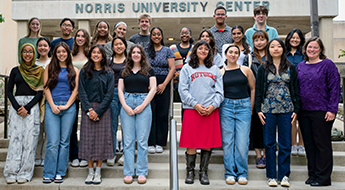The Mental Health Effects of School Shootings
After a school shooting, students’ prescriptions for mental health conditions spike and remain high for years
Get all our news
Until we can prevent school shootings from happening, we need to recognize—and work to mitigate—the impacts that these events are having on the mental health of American youth.”
Molly Schnell
IPR economist

School shootings are an all-too-common reality for a growing number of American students. Since the 1999 Columbine shooting, more than 378,000 students have experienced a shooting at school, according to a Washington Post database.
School shootings not only cost communities the lives of students and educators, but these devastating events can leave surviving students traumatized.
A new study finds that the use of prescription drugs to treat mental health conditions, including depression and anxiety, increased by over 25% among youth living near fatal school shootings. Five and a half years later, the use of these medications remained high.
Conducted by IPR economists Molly Schnell and Hannes Schwandt co-authored with Northwestern graduate student Max Pienkny and Stanford professor Maya Rossin-Slater, the study points to the ways school shootings continue to affect students’ mental health years later. Prescriptions peaked three and a half years after the shootings and then stayed elevated for another year and a half.
The study builds on previous research by Schnell, Schwandt, and Rossin-Slater showing that youth antidepressant use increased by over 20% in the two years following fatal school shootings. Other research by Schnell and Schwandt and additional collaborators reveals that students who experienced a school shooting were less likely to graduate college and be employed by their early 20s—quantifying the long-term damage of gun violence.
The researchers looked at 15 fatal school shootings that occurred between February 2008 and January 2013 tracked by the Washington Post’s school shootings database. Using data from the IQVIA Longitudinal Prescription Data (LRx) database from 2006 to 2018, they compared prescriptions written in a 5-mile radius of a school where a shooting occurred to those written in an area 10 to 15 miles away.
They focused on antidepressant, antipsychotic, and antianxiety medications—often used in the treatment of trauma—for patients between 5 and 19 years old at the time of a shooting. Antidepressants accounted for 57% of the increase in prescriptions, 36% came from antipsychotics, and 6% were from antianxiety medications.
“What surprised us the most was how persistent the effects are,” Schwandt said. “We can follow children for over five years and essentially find no evidence of a fading of the initial mental health effects.”
The researchers saw a particularly sharp jump in medication use among children and teenagers who weren’t previously taking any psychotropic prescriptions.
While the researchers note that it’s unlikely that the average American student will attend a school where a shooting occurs, the fear of experiencing this kind of event could contribute to teenagers’ rising mental health issues. Shooter drills at school and media coverage of shootings at other schools might heighten students’ stress and anxiety.
“Until we can prevent school shootings from happening, we need to recognize—and work to mitigate—the impacts that these events are having on the mental health of American youth,” Schnell said.
The evidence also highlights how essential policies are that support survivors of school shootings.
“Policies in the aftermath of shootings need to focus on the survivors who face long-term mental health consequences in response to these tragic events,” Schwandt said. “The long-term costs of shootings that we uncover also provide additional reasons to invest in measures that reduce the risk of school shootings.”
He says an important area of research is how to get mental health services to students, such as through school-based health centers. Disadvantaged students can especially benefit from these types of services. Schnell, Schwandt, Pienkny, and their co-authors are currently studying how school-based health centers can help students recover from traumatic events and improve their wellbeing and academic performance.
Molly Schell is assistant professor of economics and Hannes Schwandt is associate professor of human development. Both are IPR fellows.
Photo credit: iStock
Published: August 14, 2024.


